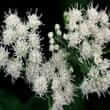Background
- Asarum is known commonly as wild ginger and is in the Asarum genus, which consists of about 60 species of perennial woodland herbs. Asarum is a member of the Aristolochiaceae (birthwort) family.
- Asarum has been administered by those trained in traditional Chinese medicine (TCM) for centuries as a pain relieving, anesthetic, fever inducing, antitussive, sweat promoting, diuretic (increasing urine flow), and hypotensive (blood pressure lowering) herb. Asarum has been applied on the skin to reduce premature ejaculation; however, more research is needed to assess asarum's effect on sexual dysfunction. Asarum europaeum has been used homeopathically for anxiety, excitability, nervousness, or melancholy.
- Asarum does not seem well tolerated in humans, except as a homeopathic agent. Aristolochic acid found in asarum has been reported to cause severe kidney failure resulting in dialysis, transplant, and death. Aristolochic acid may also be carcinogenic (cancer-causing).
References
- Cosyns JP. Aristolochic acid and 'Chinese herbs nephropathy': a review of the evidence to date. Drug Saf 2003;26(1):33-48.
View Abstract - Deng Y, Feng Y, Sun J, et al. [Study on anti-HPV activity of Asarum heterotropoides]. Zhong.Yao Cai. 2004;27(9):665-667.
View Abstract - Han Y, Kwon EH, Kim SJ. Protection of brain cells against AMPA-induced damage by Asiasari Radix extracts. Phytother Res 2003;17(8):882-886.
View Abstract - Hashimoto K, Higuchi M, Makino B, et al. Quantitative analysis of aristolochic acids, toxic compounds, contained in some medicinal plants. J Ethnopharmacol. 1999;64(2):185-189.
View Abstract - Jong TT, Lee MR, Hsiao SS, et al. Analysis of aristolochic acid in nine sources of Xixin, a traditional Chinese medicine, by liquid chromatography/atmospheric pressure chemical ionization/tandem mass spectrometry. J Pharm Biomed.Anal. 11-24-2003;33(4):831-837.
View Abstract - Kim SJ, Gao Zhang C, Taek Lim J. Mechanism of anti-nociceptive effects of Asarum sieboldii Miq. radix: potential role of bradykinin, histamine and opioid receptor-mediated pathways. J Ethnopharmacol. 2003;88(1):5-9.
View Abstract - Lee JY, Moon SS, Hwang BK. Isolation and antifungal activity of kakuol, a propiophenone derivative from Asarum sieboldii rhizome. Pest.Manag.Sci 2005;61(8):821-825.
View Abstract - Lord GM, Tagore R, Cook T, et al. Nephropathy caused by Chinese herbs in the UK. Lancet 8-7-1999;354(9177):481-482.
View Abstract - Ming HX, Liu JJ, Huang SZ. [Influence of single leaf Asarum himalaicum on renal function of rabbits]. Zhong.Xi.Yi.Jie.He.Xue.Bao. 2004;2(3):199-202.
View Abstract - Nortier JL, Martinez MC, Schmeiser HH, et al. Urothelial carcinoma associated with the use of a Chinese herb (Aristolochia fangchi). N.Engl.J Med 6-8-2000;342(23):1686-1692.
View Abstract - Schaneberg BT, Khan IA. Analysis of products suspected of containing Aristolochia or Asarum species. J.Ethnopharmacol. 2004;94(2-3):245-249.
View Abstract - Schaneberg BT, Applequist WL, Khan I. A. Determination of aristolochic acid I and II in North American species of Asarum and Aristolochia. Pharmazie 2002;57(10):686-689.
View Abstract - Stengel B, Jones E. [End-stage renal insufficiency associated with Chinese herbal consumption in France]. Nephrologie 1998;19(1):15-20.
View Abstract - Zhang F, Wang LX, Luo Q, et al. [Analysis of volatile constituents of root and rhizome of Asarum heterotropoides Fr. var. mandshuricum (Maxim.) Kitag. by gas chromatography-mass spectrometry]. Se.Pu. 2002;20(5):467-470.
View Abstract - Zhang LW, Wang JS, Jiang CQ. [Spectrophotomatric determination of antioxidative activity of extractives of Chinese traditional medicine by supercritical fluid CO2 extraction technology]. Guang.Pu.Xue.Yu Guang.Pu.Fen.Xi. 2004;24(9):1103-1105.
View Abstract







